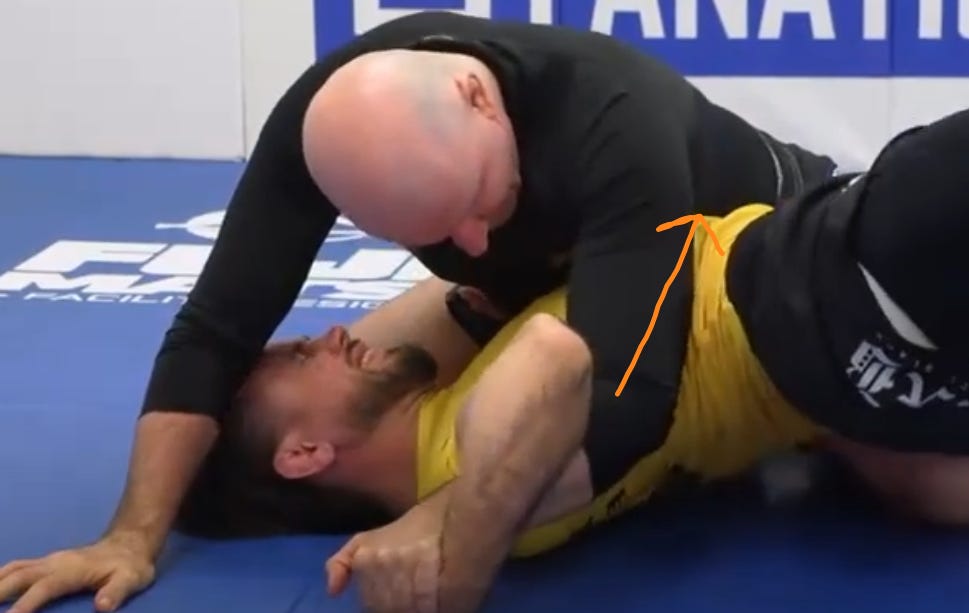In this post, I will explain the new and improved version of the Americana as espoused by John Danaher. The Americana is likely the first ever submission we learn but it almost never features in high level competition. It’s low percentage of success compared to other submissions has relegated it to the annals of history. Danaher however, thinks we can breathe new life into the Americana by improving on several key elements.
New Emphasis on Mechanics:
Hand over hand grip
You probably are familiar with the conventional figure 4 grip. This grip is satisfactory but not optimal as it does poorly against our opponent extending their arm away from us to break the grip. We will henceforth be naming this the Arm Extension Problem.
The hand over hand grip as seen above is a stronger configuration as it secures the end of the lever, being the fingers at the knuckles. This also solves the arm extension problem because our fingers are no longer the ones fighting against the extension but rather our whole hand which is more robust.
Pinch Elbows
We cannot tolerate their elbow slipping in between ours and escaping the submission. Our secondary arm must be between their ribcage and their tricep. To counter this elbow slippage problem, we must pinch our elbows together to minimise the space and thus possibility of slippage
Arm Configured Less Than 90 Degrees
Classic Americanas are taught with the opponent’s arm bent at 90 degrees. Danaher instead advocates for a sub 90 bend where the opponent’s elbow is taken as close to their ribcage as possible. This is because their main escape will be to extend their arm away from us and a 90 degree bend gives them a headstart in doing so as their elbow starts further away from us.
Head Down
When head and hands are connected together, the submission is more robust as it keeps our limbs and upperbody together for maximum leverage.
Follow the Power Curve
The idea of a Power Curve comes from the Kimura Enter the System instructional where Danaher emphasises that the finishing direction of force is never parallel to the body but instead traces a line from their shoulder to their hip diagonally across. Classic Americana finish is described as a paint brush motion where we brush their wrist across the mat parallel to their body.
The new finishing mechanic instead advocates for tracing a diagonal line with the goal of pulling their elbow across their belly and to their hip. This will counteract their bridge which they would do to relieve the pressure of the submission and will result in a finish.
Conclusion
With these 5 new points in mind, go ahead and try out the Americana in your next roll. Who knows, you might just unlock a new favourite submission.






